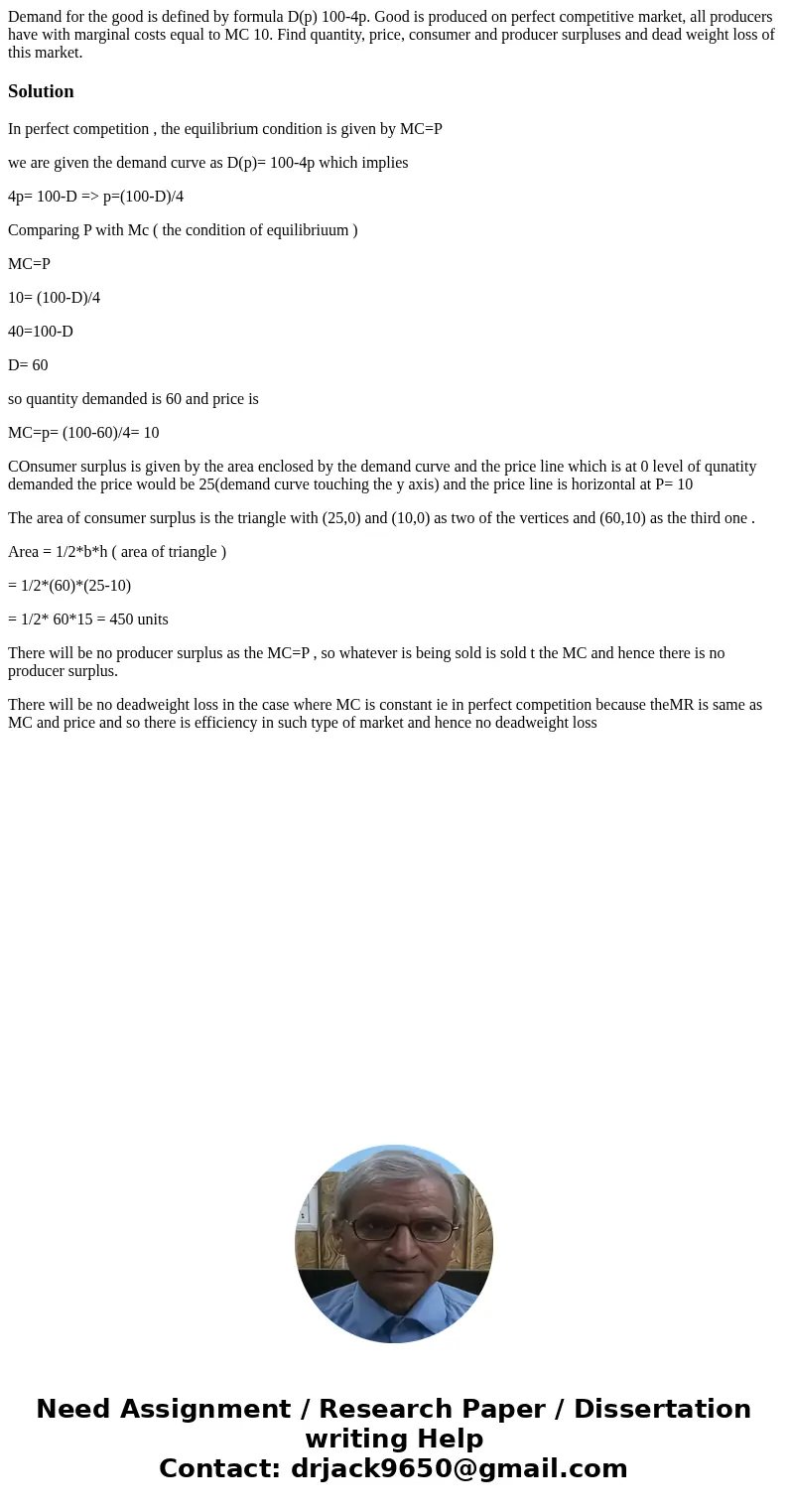Demand for the good is defined by formula Dp 1004p Good is p
Solution
In perfect competition , the equilibrium condition is given by MC=P
we are given the demand curve as D(p)= 100-4p which implies
4p= 100-D => p=(100-D)/4
Comparing P with Mc ( the condition of equilibriuum )
MC=P
10= (100-D)/4
40=100-D
D= 60
so quantity demanded is 60 and price is
MC=p= (100-60)/4= 10
COnsumer surplus is given by the area enclosed by the demand curve and the price line which is at 0 level of qunatity demanded the price would be 25(demand curve touching the y axis) and the price line is horizontal at P= 10
The area of consumer surplus is the triangle with (25,0) and (10,0) as two of the vertices and (60,10) as the third one .
Area = 1/2*b*h ( area of triangle )
= 1/2*(60)*(25-10)
= 1/2* 60*15 = 450 units
There will be no producer surplus as the MC=P , so whatever is being sold is sold t the MC and hence there is no producer surplus.
There will be no deadweight loss in the case where MC is constant ie in perfect competition because theMR is same as MC and price and so there is efficiency in such type of market and hence no deadweight loss

 Homework Sourse
Homework Sourse